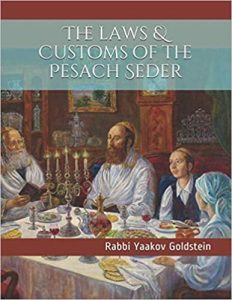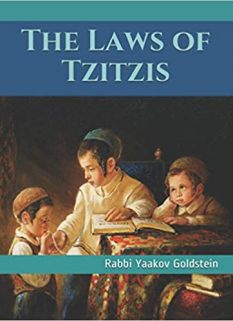
Some [Ashkenazim[2]] are accustomed to wear a Kittle on the night of the Seder.[3] [Practically, the Chabad custom is not to wear a Kittle on the night of the Seder.[4]]
Mourners:[5] A mourner may wear a Kittel by the Seder.[6] This applies even if he is still prior to the start of Shiva and will only begin the Shiva afterwards.
[1] Admur 472:4; Taz 472:3; Chok Yaakov 472:5
Chasan in first year: A Chasan who is in his first year of marriage, in some communities does not wear the Kittel on the Seder night. In other communities even a Chasan wears the Kittel. [See Maharam Shick 28; Taamei Haminhagim Kuntrus Achron 503; Vayaged Moshe 12:2; Piskeiy Teshuvos 472:3]
Not to wash the Kittel: Some are accustomed not to wash the Kittel even if it got dirty from Matzah and wine, and wear it in this method on Yom Kippur, in order so these Mitzvos stand in their favor. [Seder Hearuch 31:5]
[2] Kaf Hachaim 472:30
[3] The reason: As the Kittle is a garment of the dead and is worn in order to subjugate the heart, in order so he does not become lightheaded over the joy and freedom experienced on this night. [Admur ibid] Alternatively, as the Kittel is a garment of freedom and aristocracy, similar to that of the Kohen Gadol which wore all white on Yom Kippur when he entered the Holy of Holies. [Hagadas Maharal, Zera Gad, and Vayaged Moseh 12]
[4] Sefer Haminhagim p. 39
[5] Admur 472:4; Taz 472:3; Chok Yaakov 472:5; Minchas Elazar 3:66; Ketzei Hamateh 610; Shefa Chaim [Tzans] 2:121; See Kaf Hachaim 472:30; Nitei Gavriel 35:12; Piskeiy Teshuvos 472:3
Other opinions: Some Poskim rule that an Avel is not to wear a Kittel, as his heart is anyways in a state of brokenness due to his mourning. [M”A 472:5; Elya Rabah 472:3; P”M 472 A”A 5; Derech Hachaim ibid; Chayeh Adam 130:2 Dinei Haseder; M”B 472:13 that custom is not to wear although concludes that one may wear it if he chooses]
[6] The reason: As the Kittle is a garment of the dead and is worn in order to subjugate the heart, in order so he does not become lightheaded over the joy and freedom experienced on this night. [Admur ibid] Alternatively, as the Kittel is a garment of freedom and aristocracy, similar to that of the Kohen Gadol which wore all white on Yom Kippur when he entered the Holy of Holies. [Hagadas Maharal, Zera Gad, and Vayaged Moseh 12]



Leave A Comment?
You must be logged in to post a comment.